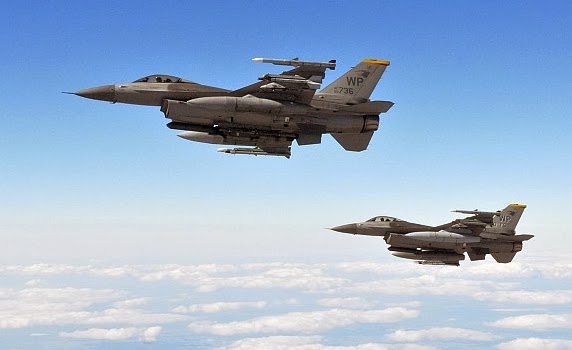Northrop Grumman expects to be under contract with Lockheed Martin shortly after being selected to supply the active, electronically scanned array (AESA) radar for an F-16 avionics upgrade under development for the U.S. Air Force and Taiwan.

Lockheed Martin is the prime contractor for the Combat Avionics Programmed Extension Suite (Capes) upgrade and was tasked by the Air Force with making the AESA source selection, selecting incumbent F-16 radar supplier Northrop Grumman over rival Raytheon.
Around 300 U.S. F-16C/Ds and 145 Taiwanese F-16A/Bs will be upgraded with Northrop’s Scaled Agile Beam radar (SABR), which is based on technology from the F-22’s APG-77(V)1 and F-35’s APG-81 AESAs.
In April, South Korea selected the Raytheon Advanced Combat Radar (RACR) for an upgrade of its KF-16s under way with BAE Systems. RACR is on the Boeing F/A-16E/F’s APG-79 and F-15E’S APG-82 AESAs.
The selections keep both active-array radars in the running for an international F-16 upgrade market estimated at 1,500 radars.
Company-funded development of the SABR AESA is essentially complete, and work under contract to Lockheed will focus on hardware and software interfaces, aircraft modifications, integration testing and qualification, says Joe Ensor, Northrop Grumman vice president and general manager for intelligence, surveillance, reconnaissance and targeting.
The initial contract is for two years of development, integration and testing, to be followed by a separate contract for production. The radars for U.S. and Taiwanese F-16s will be developed in parallel and are “essentially identical,” he says.
The SABR is designed to give pilots “the same look and feel” as the current APG-68(V)9 mechanically scanned radar, but with the increased capability, reliability and upgradability of an AESA, Ensor says. Software modes developed for the F-22 and F-35 can be ported to the SABR.
A new capability being introduced from the F-35 is a large synthetic-aperture radar map mode, which produces a roughly 1-by-1-mi. ground image with higher resolution, allowing automatic target recognition, he says.
Although it has been the incumbent radar supplier since the F-16 program began 40 years ago, Northrop Grumman “really took this competition seriously—that’s why we were motivated to develop this radar on company funds,” Ensor says. “From the beginning we treated this as a very difficult competition to win, as we were competing with a viable option.”
Raytheon says it “looks forward to meeting with Lockheed Martin Aeronautics to better understand the selection decision. In the meantime, we will continue pursuing other international opportunities, building on our partnership with BAE as we modernize South Korea’s KF-16 fleet.”
No comments:
Post a Comment